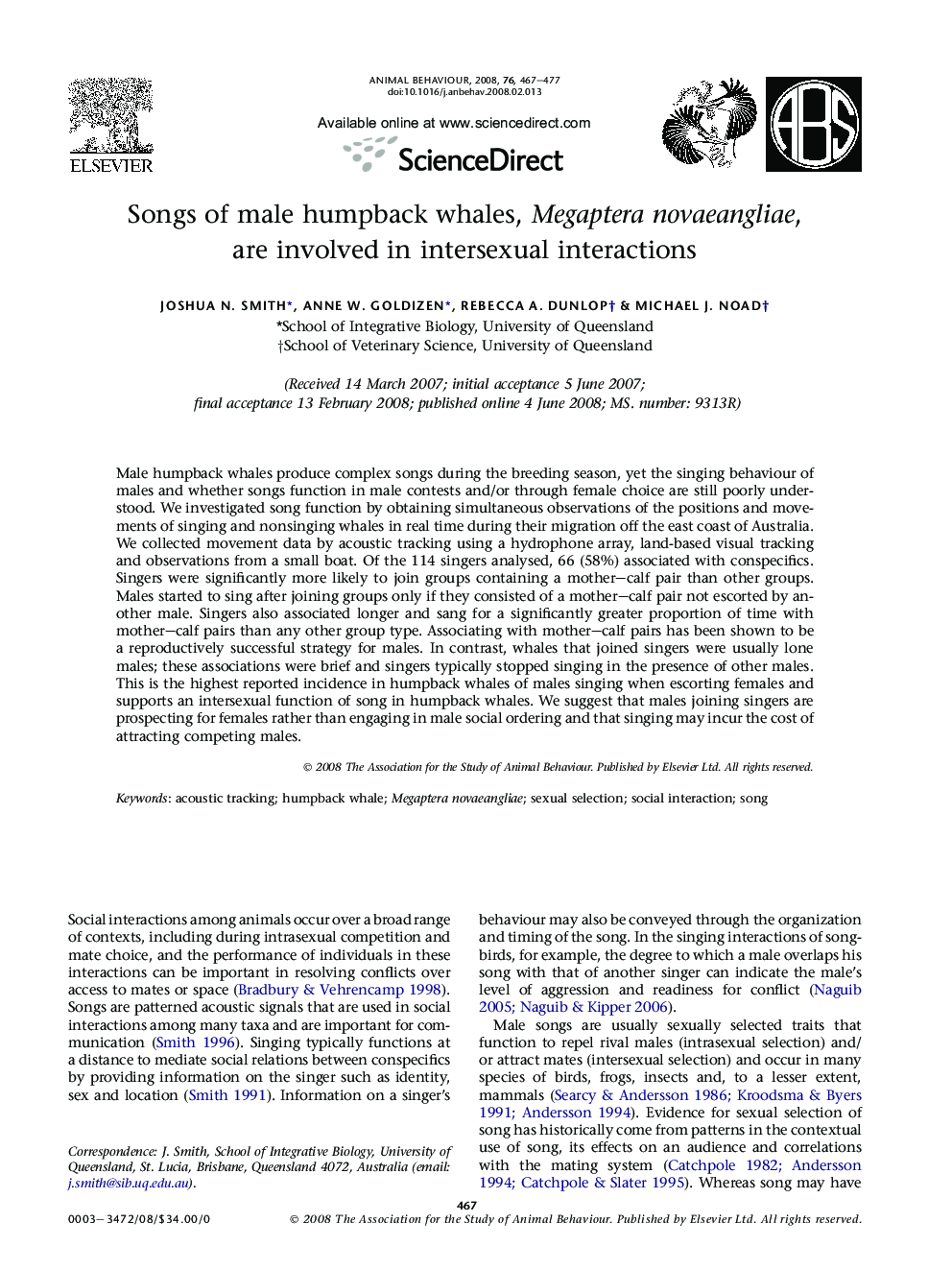| کد مقاله | کد نشریه | سال انتشار | مقاله انگلیسی | نسخه تمام متن |
|---|---|---|---|---|
| 2418881 | 1104359 | 2008 | 11 صفحه PDF | دانلود رایگان |

Male humpback whales produce complex songs during the breeding season, yet the singing behaviour of males and whether songs function in male contests and/or through female choice are still poorly understood. We investigated song function by obtaining simultaneous observations of the positions and movements of singing and nonsinging whales in real time during their migration off the east coast of Australia. We collected movement data by acoustic tracking using a hydrophone array, land-based visual tracking and observations from a small boat. Of the 114 singers analysed, 66 (58%) associated with conspecifics. Singers were significantly more likely to join groups containing a mother–calf pair than other groups. Males started to sing after joining groups only if they consisted of a mother–calf pair not escorted by another male. Singers also associated longer and sang for a significantly greater proportion of time with mother–calf pairs than any other group type. Associating with mother–calf pairs has been shown to be a reproductively successful strategy for males. In contrast, whales that joined singers were usually lone males; these associations were brief and singers typically stopped singing in the presence of other males. This is the highest reported incidence in humpback whales of males singing when escorting females and supports an intersexual function of song in humpback whales. We suggest that males joining singers are prospecting for females rather than engaging in male social ordering and that singing may incur the cost of attracting competing males.
Journal: Animal Behaviour - Volume 76, Issue 2, August 2008, Pages 467–477